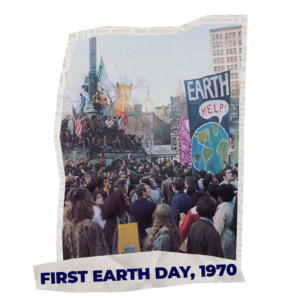
Changing Consumer Behavior and the Importance of Sustainable Development Goals (SDGs)
Changing consumer behavior has called upon corporations to put environmental, social, and governance issues at the forefront of their business strategies. However, more importantly, internal diversity efforts have helped improve the process in which employees perceive a company’s ESG-focused strategies, furthering the conversation surrounding the importance of developing and implementing more progressive corporate social responsibility planning.
In an attempt to sway public opinion and address internal concerns, organizations are building more robust CSR frameworks, leveraging ESG-focused initiatives, partially supported by external frameworks and industry standardization practices. To further bolster these efforts and to address critical climate and environmental issues more effectively, organizations are now starting to look outside of their internal structures to deliver more purpose-driven solutions to environmental and social issues.

The Significance of Earth Day in Promoting Environmental Consciousness
Since April 1970, Earth Day has become an internationally recognized event that is now celebrated by countries across the globe. Earth Day aims to address issues relating to the environment and how individual and organizational efforts can bolster environmental consciousness.
During the first several years, Earth Day drew support from more than 20 million American protestors aiming to raise awareness against the rapid deterioration of critical natural resources and the importance of establishing environmental laws, regulations, and compliance practices.
Over the decades, Earth Day became more widely supported, having amassed more than 200 million supporters by the late 1990s and nearly a billion by 2000. Earth Day celebrates all the progress we’ve made since the year of its founding; however, the conversation has now shifted to incorporate more progressive environmental policies that can help to combat climate change, mitigate impact driven by industrial activities, and hold individual stakeholders accountable for their actions.
The Link between Earth Day and Corporate Environmental Strategies
Rapidly deteriorating environmental conditions, alongside the depletion of natural resources and the impact of industrial activities, have put pressure on corporations to develop and implement more progressive environmental strategies.
The focus here is not only on the internal justification of developing more sustainable solutions but rather on how organizational impact can drive change and better benefit communities.
For clarification, corporate social responsibility is centered on building corporate strategies that focus on the broader view of companies’ or organizations’ environmental responsibility and the actionable steps they take to make sustainable improvements and enhance self-regulation and environmental accountability.
On the other hand, environmental, social, and governance brings into question various metrics that can help stakeholders, including government entities, investors, employees, and customers evaluate a company’s sustainability efforts. ESG places a strong emphasis on delivering reports using available data and is often administered by external bodies and regulators.
In this case, we’ll be focusing on how Earth Day can help inspire CSR activities more effectively, ensuring the company’s commitment to serving purposeful environmental strategies that can benefit employees, investors, customers, and most importantly, the environment and surrounding communities.
Corporate Social Responsibility in Practice
For organizational leaders, CSR in practice can mean the following:
- Corporate strategies are developed in accordance with efforts to benefit communities and the societies they exist within.
- CSR deliverables are goal-oriented and can vary across organizations, departments, and teams; however, these activities support the broader view and align with the company’s commitments and overall mission.
- Incorporation of accountability and self-regulation are critical elements within internal communication processes.
- Delivery of performance metrics is shared, communicated, and discussed between management, investors, and employees.
- Implementation of CSR initiatives serves as a benchmark for mitigating environmental and social harm.
- CSR is used in part as an indicator of company culture that aims to promote satisfactory employee conditions and improve overall performance.
As more organizations begin to recognize the importance of incorporating CSR activities into their corporate practices, they are also finding the efforts lead to several beneficial advantages against market competitors:
- Improves employee retention and engagement: The importance of having a palatable CSR mission may influence a company’s ability to hire, retain, and onboard employees. In one study, researchers found that corporate social responsibility and internal and external CSR activities can improve employee satisfaction.
- Improves cross-functional employee relationships: Similarly, having a strong understanding of CSR mission values may help develop more cross-functional employee relationships. This is seen in the same study, whereby researchers have found that implementation of CSR has a significant relationship with brand equity and brand reputation.
- Boosts organizational performance: Social responsibility has become a way of measuring organizational financial success. One recent study has found mounting evidence that social responsibility, measured by ESG performance indicators, can have a direct positive effect on a company’s financial performance.
- Builds more optimized community relationships: Undertaking environmental and social challenges can further improve the community an organization may find itself in.
SDGs, Targets, and Indicators
SDGs Addressed or Connected to the Issues
- Sustainable Development Goal 7: Affordable and Clean Energy
- Sustainable Development Goal 9: Industry, Innovation, and Infrastructure
- Sustainable Development Goal 12: Responsible Consumption and Production
- Sustainable Development Goal 13: Climate Action
- Sustainable Development Goal 15: Life on Land
Specific Targets Based on the Article’s Content
- SDG 7.2: Increase the share of renewable energy in the global energy mix
- SDG 9.4: Upgrade infrastructure and retrofit industries to make them sustainable
- SDG 12.6: Encourage companies to adopt sustainable practices and integrate sustainability information into their reporting cycle
- SDG 13.2: Integrate climate change measures into national policies, strategies, and planning
- SDG 15.2: Promote the implementation of sustainable management of all types of forests
Indicators Mentioned or Implied in the Article
- Renewable energy share in the global energy mix
- Investments in sustainable infrastructure and industries
- Adoption of sustainable practices by companies
- Inclusion of sustainability information in company reporting
- Incorporation of climate change measures into national policies and planning
- Implementation of sustainable forest management
Table: SDGs, Targets, and Indicators
SDGs Targets Indicators SDG 7: Affordable and Clean Energy 7.2: Increase the share of renewable energy in the global energy mix Renewable energy share in the global energy mix SDG 9: Industry, Innovation, and Infrastructure 9.4: Upgrade infrastructure and retrofit industries to make them sustainable Investments in sustainable infrastructure and industries SDG 12: Responsible Consumption and Production 12.6: Encourage companies to adopt sustainable practices and integrate sustainability information into their reporting cycle Adoption of sustainable practices by companies, inclusion of sustainability information in company reporting SDG 13: Climate Action 13.2: Integrate climate change measures into national policies, strategies, and planning Incorporation of climate change measures into national policies and planning SDG 15: Life on Land 15.2: Promote the implementation of sustainable management of all types of forests Implementation of sustainable forest management Note: The indicators listed are based on the information provided in the article. Additional indicators may exist for each target.
Behold! This splendid article springs forth from the wellspring of knowledge, shaped by a wondrous proprietary AI technology that delved into a vast ocean of data, illuminating the path towards the Sustainable Development Goals. Remember that all rights are reserved by SDG Investors LLC, empowering us to champion progress together.
Source: equities.com

Join us, as fellow seekers of change, on a transformative journey at https://sdgtalks.ai/welcome, where you can become a member and actively contribute to shaping a brighter future.






